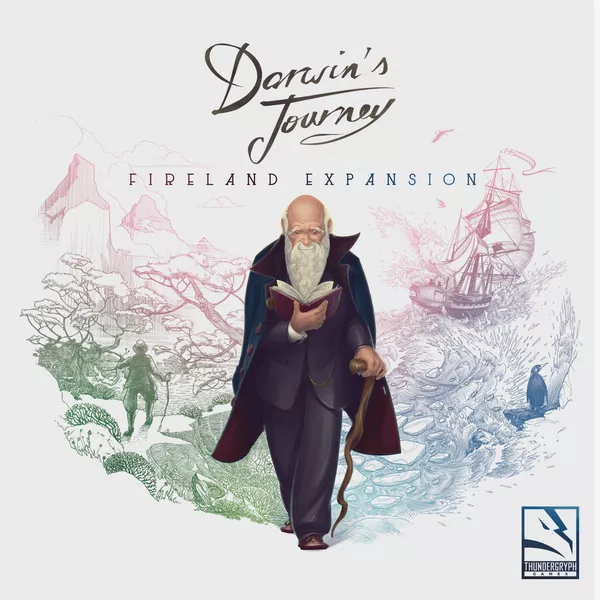Welcome to this week’s review! Last week I reviewed the base game for Darwin’s Journey, and for this week, I’ll be reviewing the first large expansion for the game – the Fireland Expansion. So without further ado, let’s jump into my thoughts on the expansion.
Darwin’s Journey: Fireland Expansion
- Designers: Simone Luciani, Nestore Mangone
- Publisher: ThunderGryph Games
- Complexity: Heavy
- Time: 60-120 Minutes
- Players: 1-4
- Main Mechanisms: Worker Placement
Darwin’s Journey: Fireland Expansion is the first large expansion for Darwin’s Journey, which is a worker-placement game themed around Darwin’s Journey through the Galapagos Islands. The Fireland Expansion adds plenty of new content for the game, such as a new map board overlay, adventure cards, a time track, a new purple seal type, scenario cards, and more crew cards, special action tiles, objectives, Beagle goals, and correspondence tiles.
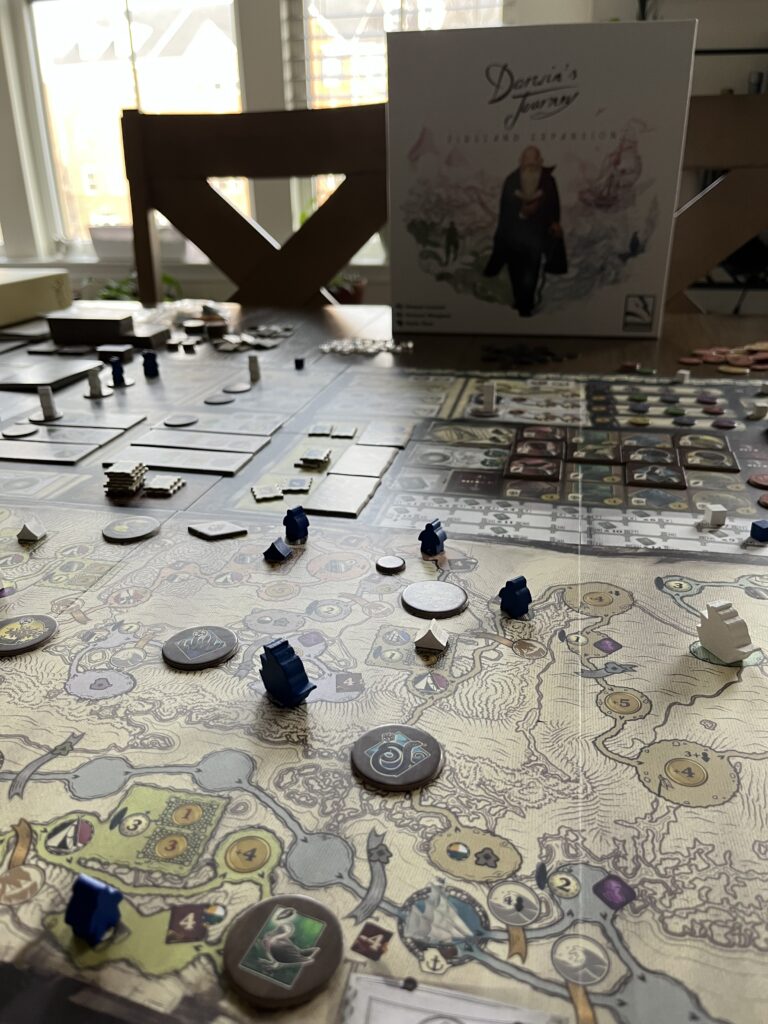
That’s a lot of new content, but let’s start with arguably the biggest change to the game – the new map board. The base game of Darwin’s Journey had three islands to explore with your single ship that progresses along a track. With the new expansion map, there are now a total of five islands to explore, as well as two new ship tracks. Overall, the new map adds a lot of extra variety to the exploration and navigation actions, and there’s also an additional reward, besides victory points, for being the first to reach the end of each track that often allow you to take additional actions. While I didn’t mind the map in the base game, the new Fireland map is an overall improvement over the original in my opinion, albeit at the expense of some additional complexity. If you’re someone who has grown tired of the original map, then the new map definitely shakes things up in interesting ways.
While the new map is certainly a highlight, probably my favorite part of the expansion are the new adventure cards. There are two new decks of cards, land and ocean, that allow you to draw a card from the corresponding deck when either one of your explorers or ships crosses a line with a land or ocean adventure token. Each card has two options that you immediately choose from. One option will always allow you to take the adventure token, giving you victory points at the end of the game based on how many you’ve collected, and taking the token also prevents other players from being able to draw an adventure card when they cross that line for the rest of the game. Each option on the card will require you to spend resources in order to receive the reward, often by way of spending a new resource called time.
The way time works is that a lot of new elements in the expansion encourage players to spend time, which they track on a new time track board. As players spend more time, they’ll cross thresholds which will give the player penalties for the rest of the game until they have collected enough time to move back up the track and cross the threshold again. These penalties often apply to certain actions, for example, each time you move one of your ships through the navigation action, you get to move one less space. In addition, at the end of the game, players will score negative victory points based on their position on the time track, with more time spent correlating to more negative victory points.
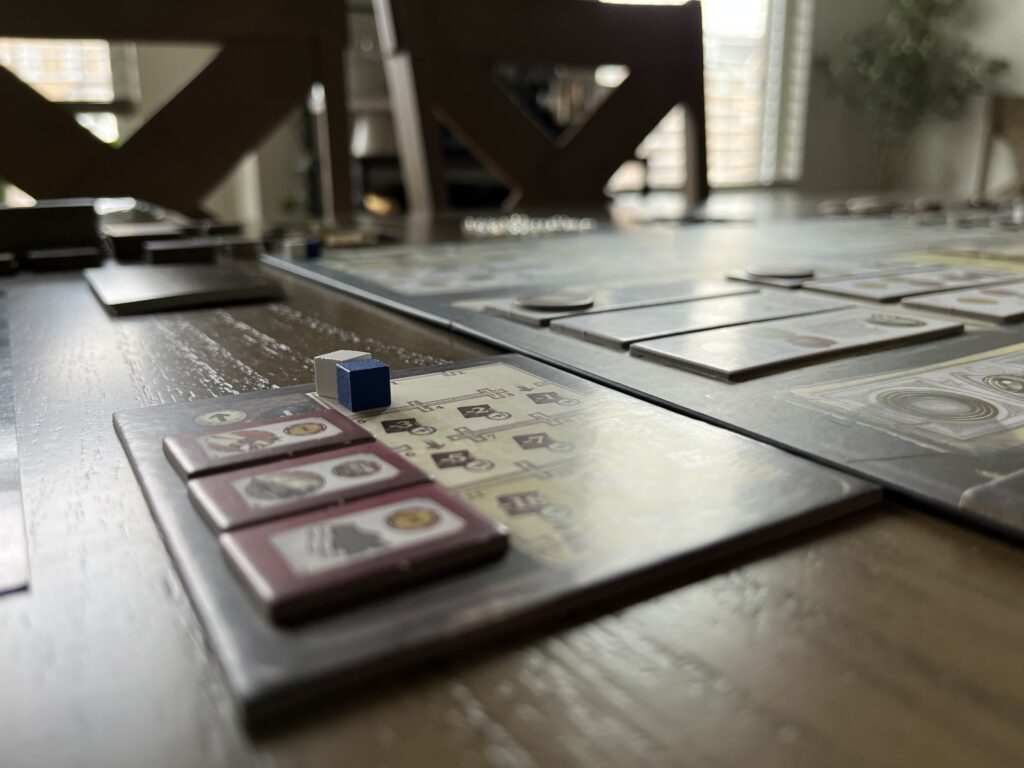
The new time mechanism combined with the adventure cards led to a lot of new decision-making around balance. The adventure cards really encourage players to spend time, but gaining time back is generally more difficult than spending it. I often found myself moving far down the time track and suffering a lot of penalties, with my rationale being that I’ll take actions to get my time back by the end of the game. This usually worked out, and the few scenarios we played encouraged players to spend time, while still providing avenues to gain time back, but I could imagine that certain random setups could make gaining time a lot trickier.
Another element that encourages players to spend time is through a new purple wax seal type. There are eight new purple time wax seals that get shuffled with the normal seals, so they come out in the normal scroll display of seals to buy. These new purple time seals act the same as the purple wax seals in the base game (they are a wild seal); however, when a player buys one of these seals, in addition to the normal cost, they have to also spend one time. I found these new purple seals to be very beneficial, as they were usually easier to come by than the base game’s. Also, since these were easier to come by, it made assigning seals to workers feel less restrictive without needing to specialize my workers in one specific direction.
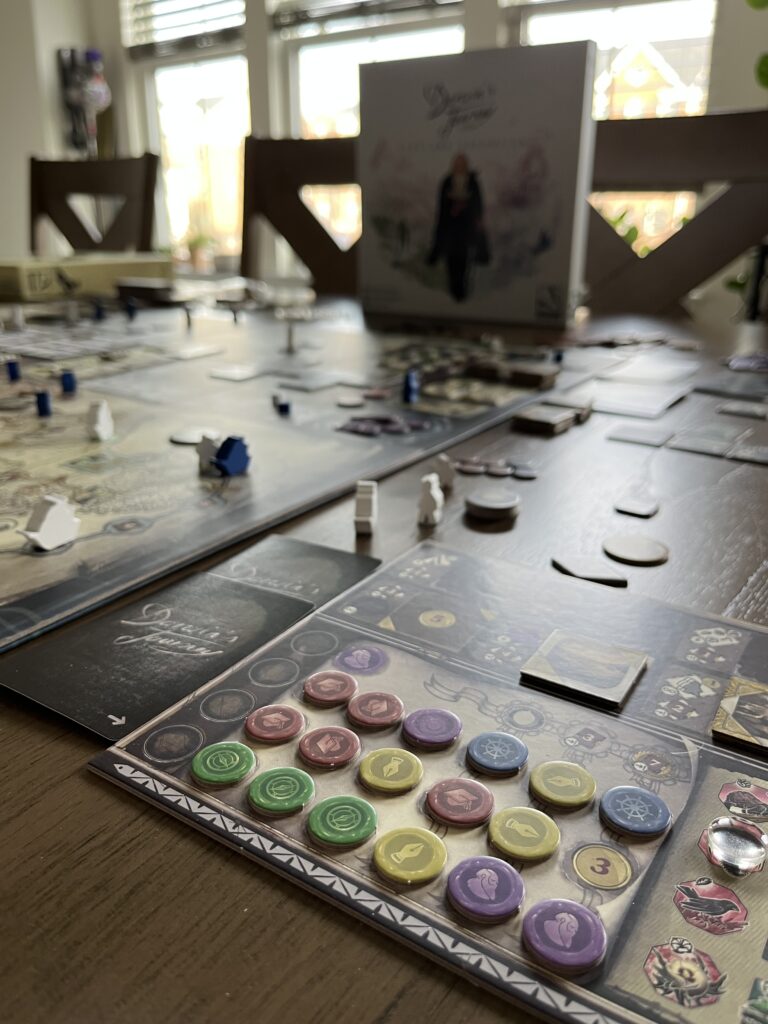
Overall, I really enjoyed the content added from the expansion, but there were a few slight negatives worth mentioning. First off, and this is a very minor critique, I wish the adventure scoring for tokens collected at the end of the game started at zero and went up from there, rather than starting at negative and eventually turning positive after collecting enough. I know that this mathematically doesn’t make any difference, but I think it would help the game feel a little less punishing.
Speaking of, if you thought the base game was a little too tight and punishing, the expansion probably won’t change your mind. This is especially true with the time track and penalty tokens. One of the designers, Simone Luciani, seems to enjoy mechanisms that give players penalties if they don’t satisfy certain conditions. Two that come to mind from his previous designs is the Emperor track from Grand Austria Hotel and the excommunication tiles from Lorenzo il Magnifico. Compared to the other two, the time track in this expansion is likely one of the most punishing because the penalties kicks in as soon as your time marker crosses the threshold. Personally, I like the push and pull with the time system in the Fireland Expansion, but I can imagine some people might be turned away by it. If you were not a fan of the base game of Darwin’s Journey, I don’t think this expansion will drastically change your feelings on the game.
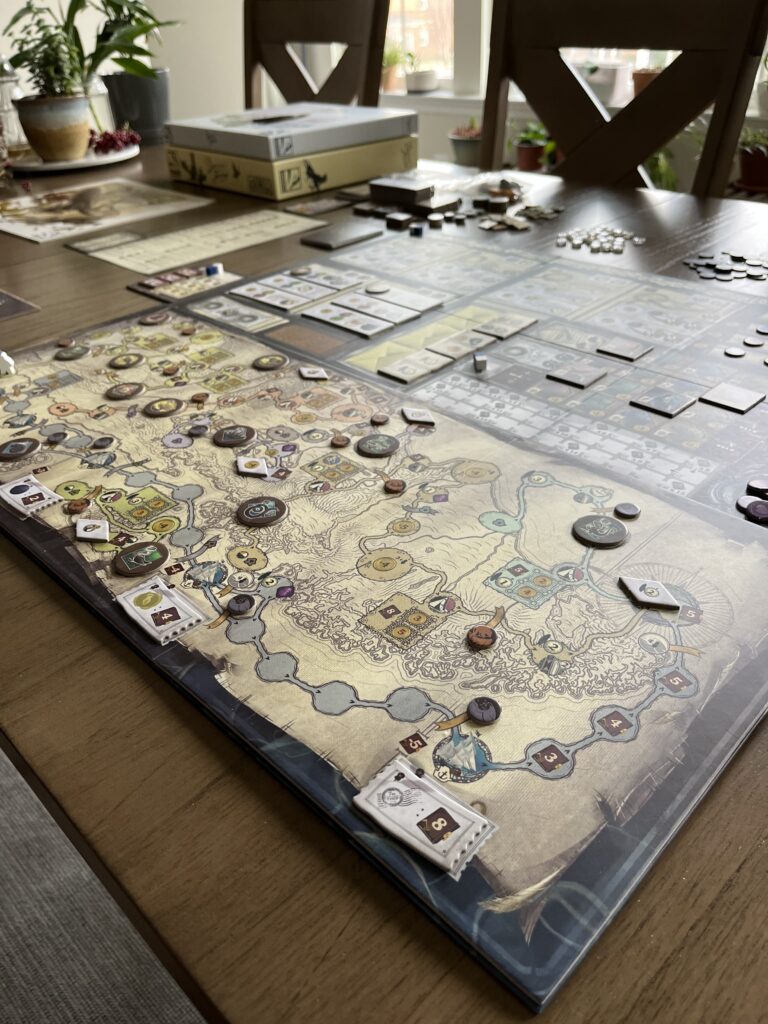
While the Fireland Expansion for Darwin’s Journey doesn’t necessarily fix my main issues with the base game, the expansion does provide a lot of new and interesting mechanisms and content. Specifically, along with the new map board, the adventure cards are the standout for me from this expansion. I will likely opt to play with the expansion more often than not, but if I’m teaching Darwin’s Journey to new players or I’m just looking for a slightly less complex experience, I’ll still be happy to play with just the base game.
With that, I’ll wrap up this week’s review! I’d love to hear your thoughts on any of the games I’ve mentioned or future content suggestions in the comments below. Happy gaming!
If you liked this post and want to be notified when new content is released, then follow me on Instagram @themeepledigest.
